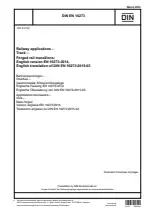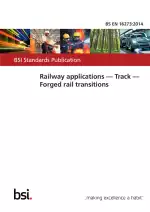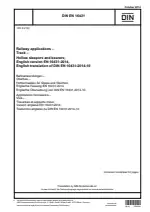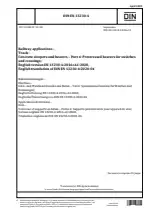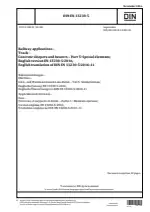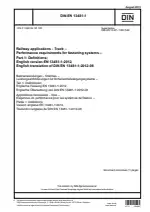Railway Applications - Track - Forged Rail Transitions
Also Known As:
The DIN EN 16273 standard focuses on standardization in the field of sleepers and bearers in railway tracks. The purpose of this standard is to provide specific design guidance in several key areas.
Firstly, it outlines geometry requirements for forged rail transitions, ensuring that the shape and dimensions of these components conform to established standards. This ensures compatibility and uniformity across different rail systems.
Secondly, the standard specifies material and processing requirements for forged rail transitions. It lays down guidelines for the type of materials, such as steel alloys, that should be used, as well as the manufacturing processes to be followed. These specifications ensure the durability and reliability of forged rail transitions.
Thirdly, the standard addresses requirements for fastening points and insulation. It provides guidance on how to securely attach the forged rail transitions to sleepers or bearers, as well as how to ensure electrical insulation in electrified track sections.
Lastly, the standard includes test procedures that should be conducted to ensure compliance with the specified requirements. These tests are designed to evaluate the performance and suitability of the forged rail transitions in terms of their geometry, material, and functionality.
| Descriptors | Acceptance inspection, Approval, Approval testing, Definitions, Forged, Manufacturing tests, Permanent ways, Profile, Rails, Rails (materials handling equipment), Railway applications, Railway construction, Railway installations, Railway rails, Railways, Specification (approval), Testing, Tracks (materials handling equipment), Transitions, Travel ways, Vignol rail, Pavements (roads), Sheets, Roadways, Superstructure, Stiles |
| ICS Codes | 93.100 - Construction of railways |
| Language(s) | English |
| File Size | 1.5 MB |

